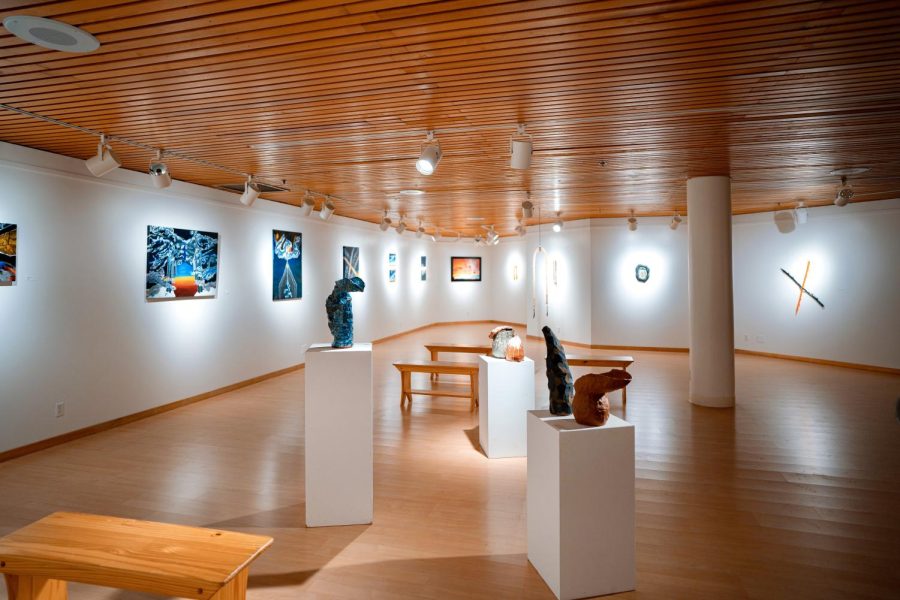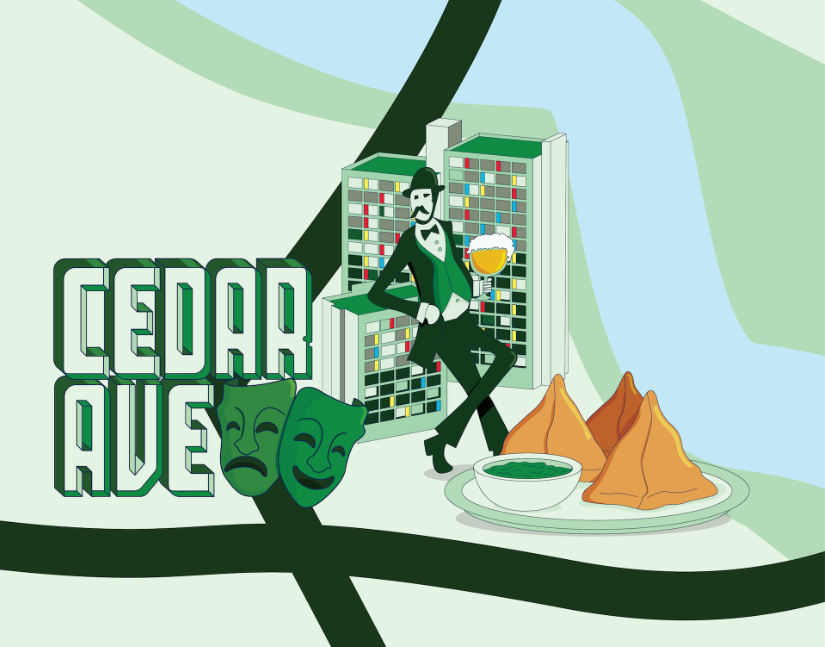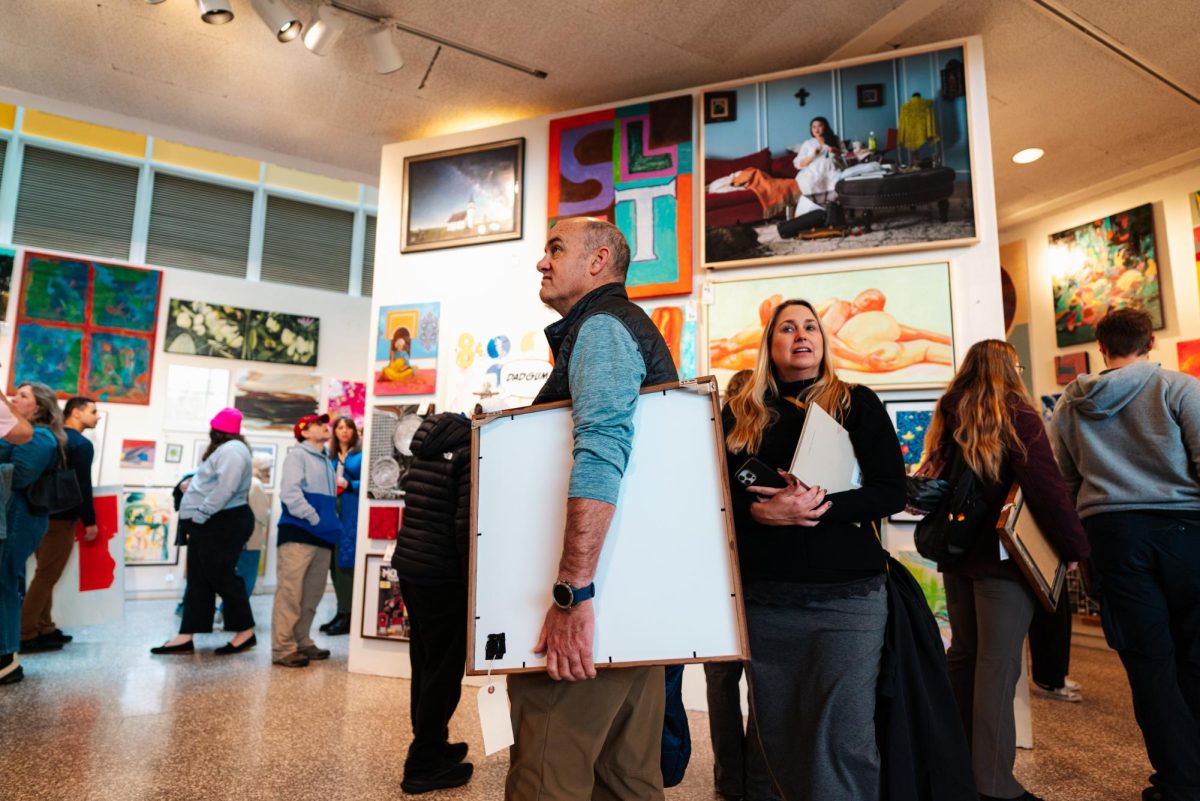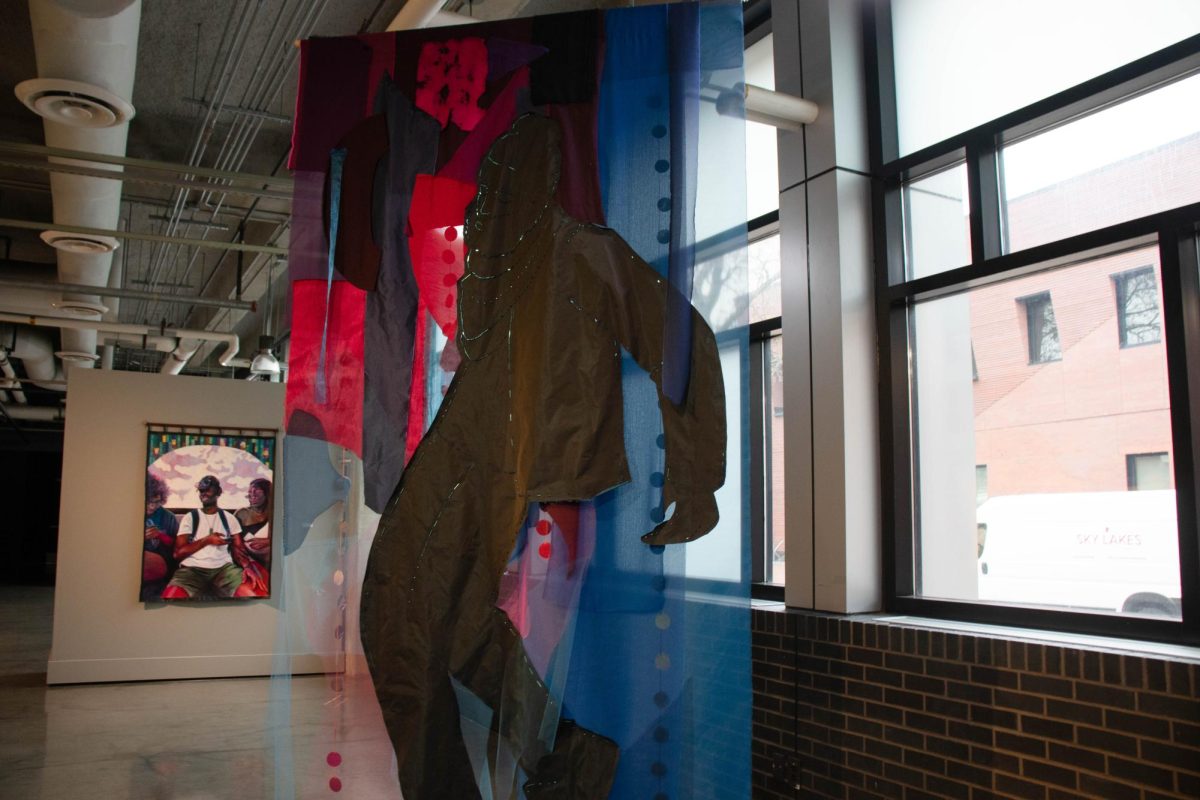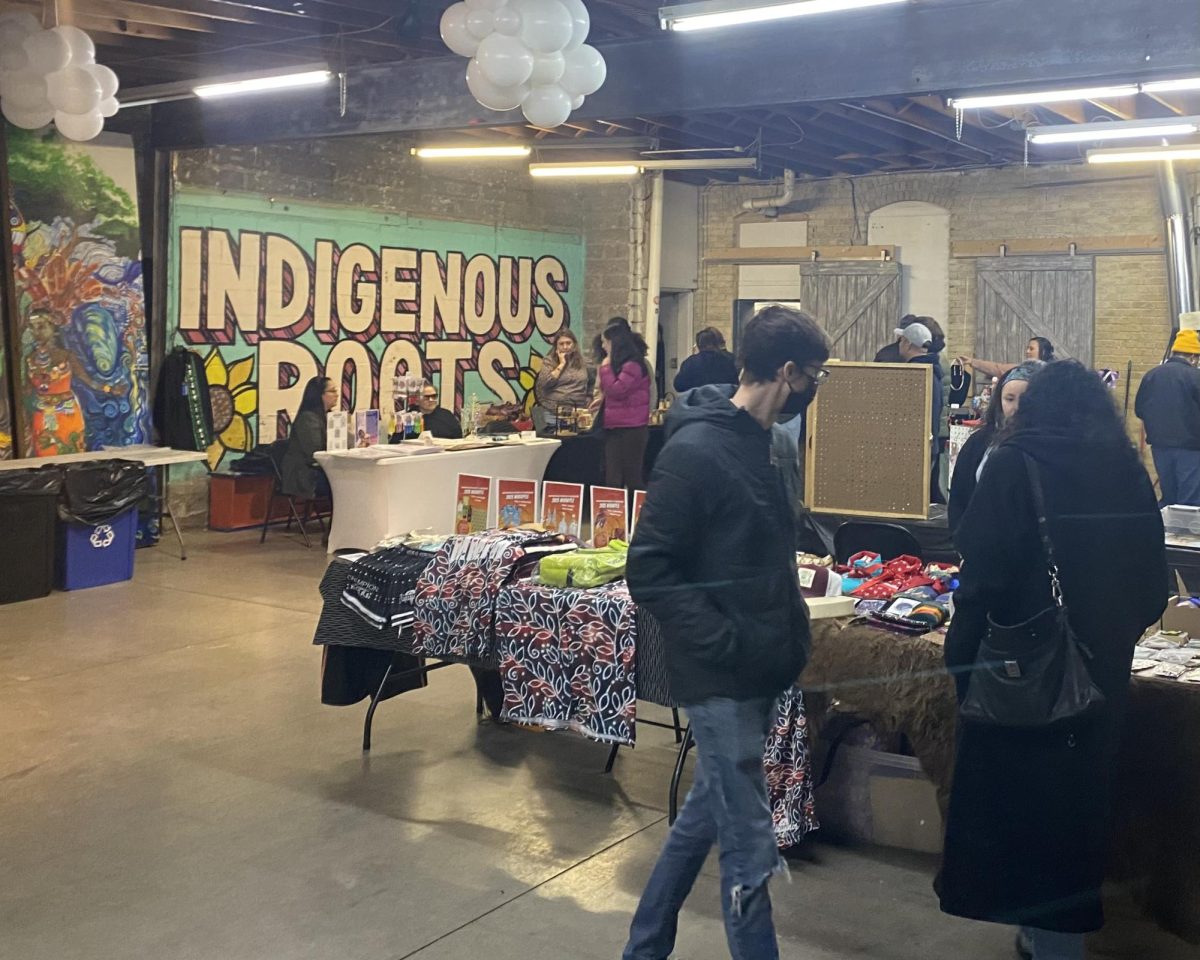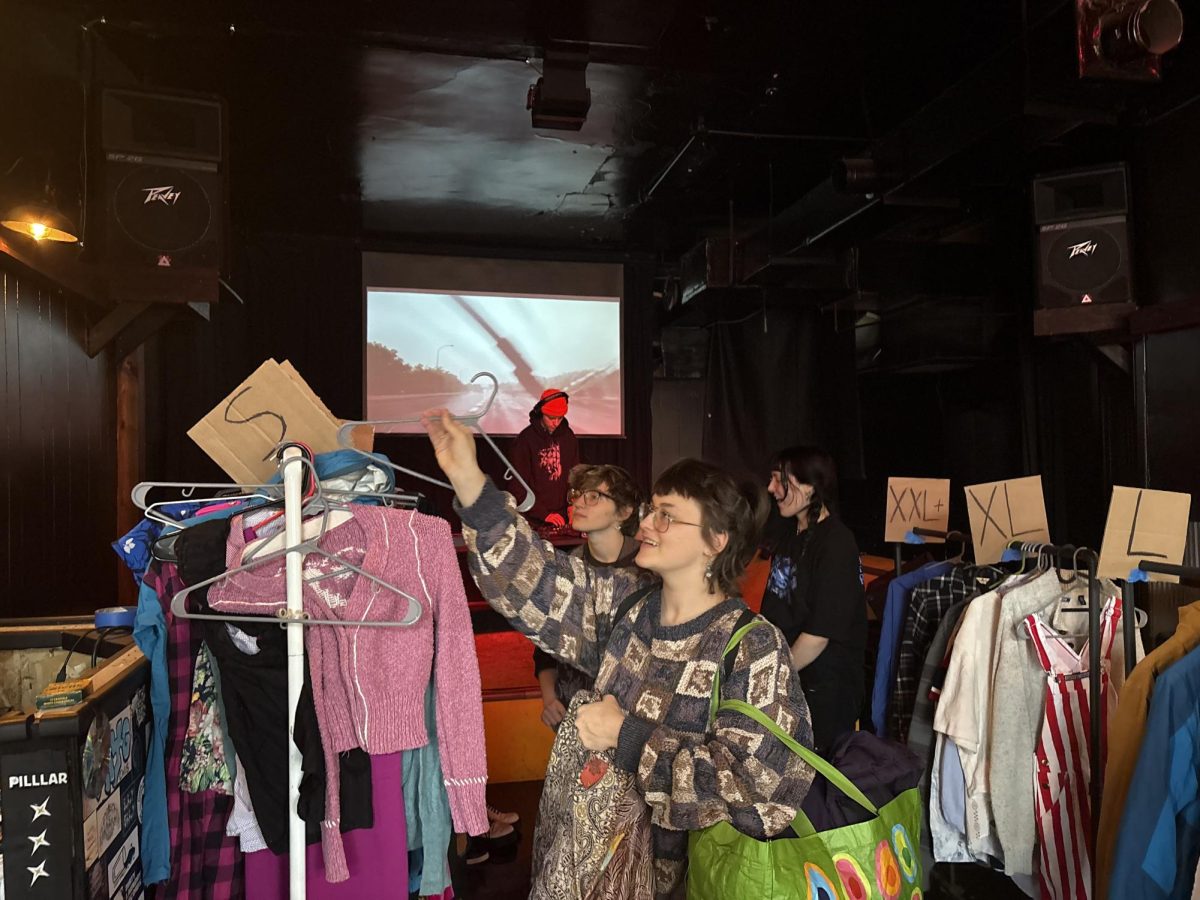Consider the reality that exists around us. Space and time create a paradigm that shapes our everyday world, the way we see ourselves and how we understand day-to-day life. But what happens when those concepts readjust to ask new questions?
Visual artists from across the Twin Cities are using their art to understand the importance and changing dynamics of our everyday reality in the University of Minnesota’s newest multimedia exhibition, “Times in Collapse.”
Running until Feb. 18 at the St. Paul Student Center, the exhibition features four visual artists diving into four different mediums — sculpture, painting, printmaking and ceramics. Free to the public, the exhibition is located in the Larson Gallery and is open Monday through Friday from 11 a.m. to 4 p.m.
“If you want to view an alternate perspective separate from what you’re currently living in, come see ‘Times in Collapse,’” Austin Seitzinger said.
Seitzinger is one of the four artists in the exhibition and studies painting in the University’s visual art program. As an avid outdoor photographer, the inspiration for his paintings came from photos he takes exploring local parks and trails throughout the Twin Cities. In our digital-driven society, Zeitzinger said he hopes the exhibit reminds viewers that the natural world plays a role equally as important as the internet.
“The theme of my work would be a very primal sort of humanity,” Seitzinger said. “Just tapping into your consciousness, your human soul, your primal identity.”
Using cloudy shades of gray and black to cut against layers of red, blue and orange,
Seitzinger’s work pulls the viewer into a world of stark division between the transforming reality of the online world and Mother Nature calling attention away from the online world.
“My style of work tries to cause a disturbance with the viewer’s perspective and tries to ignite their humanity,” he said.
Walking past Seitzinger’s works hanging along the gallery’s back wall, an oversized silicone jump rope hangs from the ceiling. Its off-white coloring and black handles create a striking resemblance to bones; a detail that makes the viewer question the everyday toy.
Zachary Betts, the creator of the jump rope sculpture, titled “slipping touch”, and several other sculptures in the gallery, explained that the COVID-19 Stay Home Order led him to find comfort in everyday items that offered physical support when there was so little social and mental support available during that time.
“I became really interested in the idea of emotion around the loss of social support systems and began searching for different physical design signifiers,” Betts said. “Like handrails, walking sticks and even the soles of our shoes, that kind of offer support for our feet. Just those physical things that we can grasp or rely on to hold us up and support us.”
Betts is both a local Twin Cities artist and visual arts professor at the University of Wisconsin Stout, and was a key player in shaping both the theme and title of the show. He explained that after offering up several title ideas for the show to the other artists, the four creatives collectively decided on “Times in Collapse.” Deciding to focus the theme of the exhibition on reality granted each artist the opportunity to translate that idea in any direction they created.
“All of the works in the exhibition create their own personalities, but when they are all put together, they tell such a detailed story,” Ciel Rossmiller explained.
The University alum created five ceramic pieces for the exhibit, all telling stories based on three adjectives — pious, incredulous and obstinate. The adjectives describe Rossmiller’s path taken into spirituality and based around those words, the pieces in the exhibition show that story.
Like all of the art displayed in the exhibition, Rossmiller’s love for ceramics stems from the touch and effort put into every piece created. They believe that all art tells a story that should be heard.
“The marks that fingers leave on clay, like the acknowledgment that someone made this object is what makes it so important,” Rossmiller said. “That’s why art is so important. Someone made it to tell a story and we should all listen to that tale.”


